Goans take immense pride in their rich architectural heritage, and are generally aware of the need to protect it. However, when it comes to actually conserving heritage, they often adopt a stance that threatens its very existence. They look at ‘reconstruction’ in the same light as ‘restoration’, ignorant of the sensitivity and principles involved in conservation. A conservation architect is seen as unnecessary, and various patrons seem to swap patience and authenticity for speed and cheap materials. In the past years, we have lost many invaluable Goan structures due to this well-meaning but callous attitude of ‘heritage-loving’ Goans.
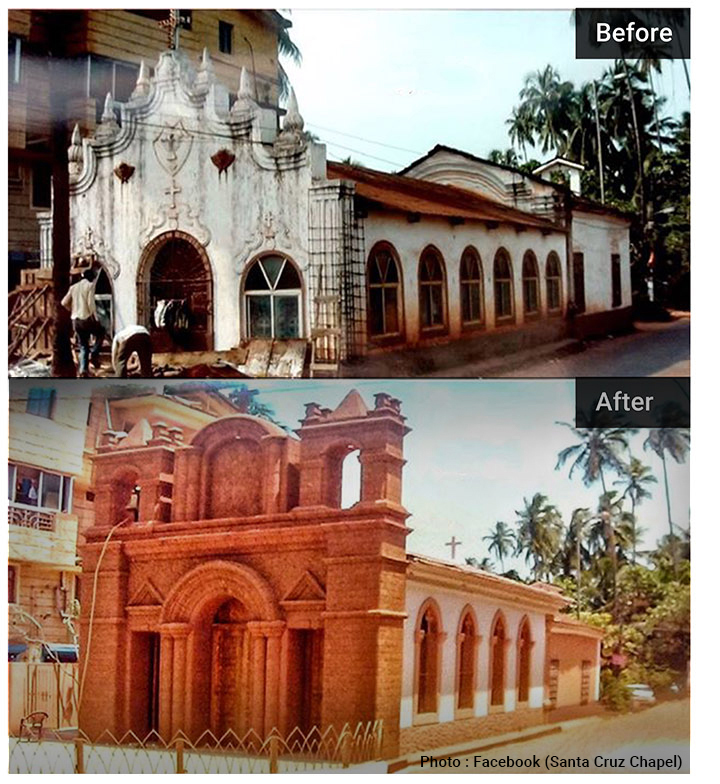
A shocking example is the recent renovation carried out on the 225 year old Holy Cross Chapel in Calangute. Images and reports of the ‘facelift’ of the Chapel surfaced on several news outlets heaping praise on the benefactor as it was done ‘without consultants’ and in ‘record time’. The original Chapel, with its indigenous Baroque facade has now disappeared completely; replaced with a gaudy, unplastered laterite facade decorated with a set of clichéd embellishments, lacking any sense of proportion or architectural merit.
This obsession with exposed laterite is not new. Perhaps the first-ever and the most famous ‘false restoration’ took place in the 1950s at the Bom Jesus Basilica. Portuguese architectural historian Joaquim Santos explains that it was the Portuguese architect Baltazar de Castro, who in keeping with the cultural agenda of the ‘Estado Novo’ that sought to medievalize Baroque architecture, stripped off the lime plaster coat of the Basilica making it look ‘more ancient’ but consequently endangering the structure.
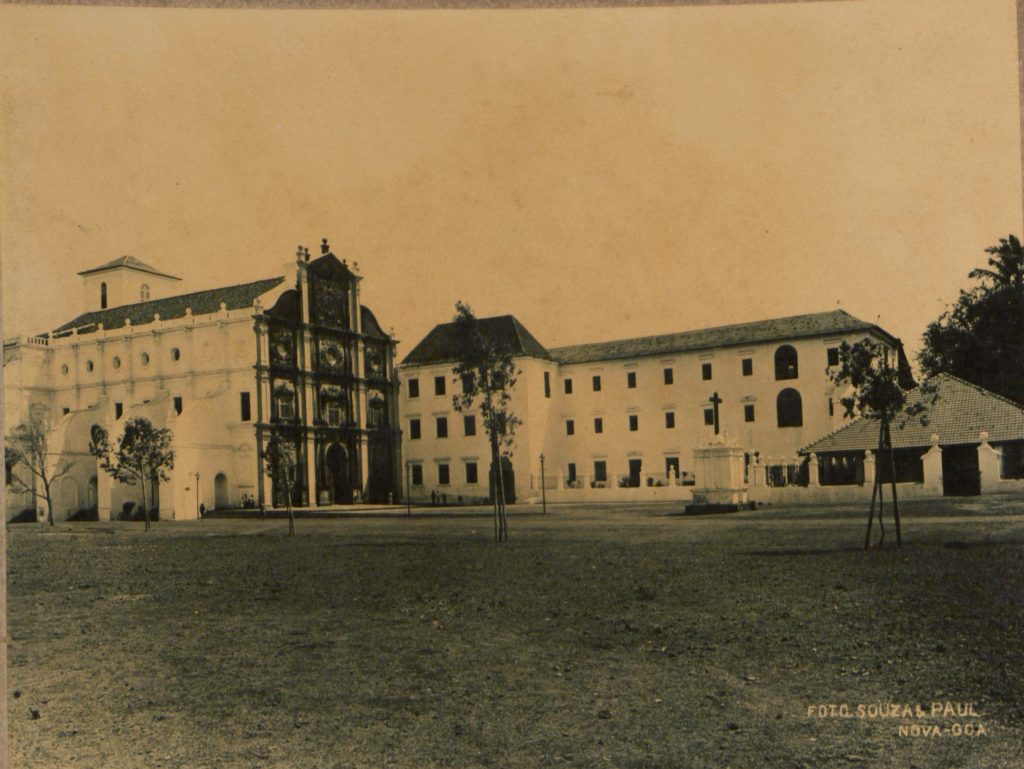
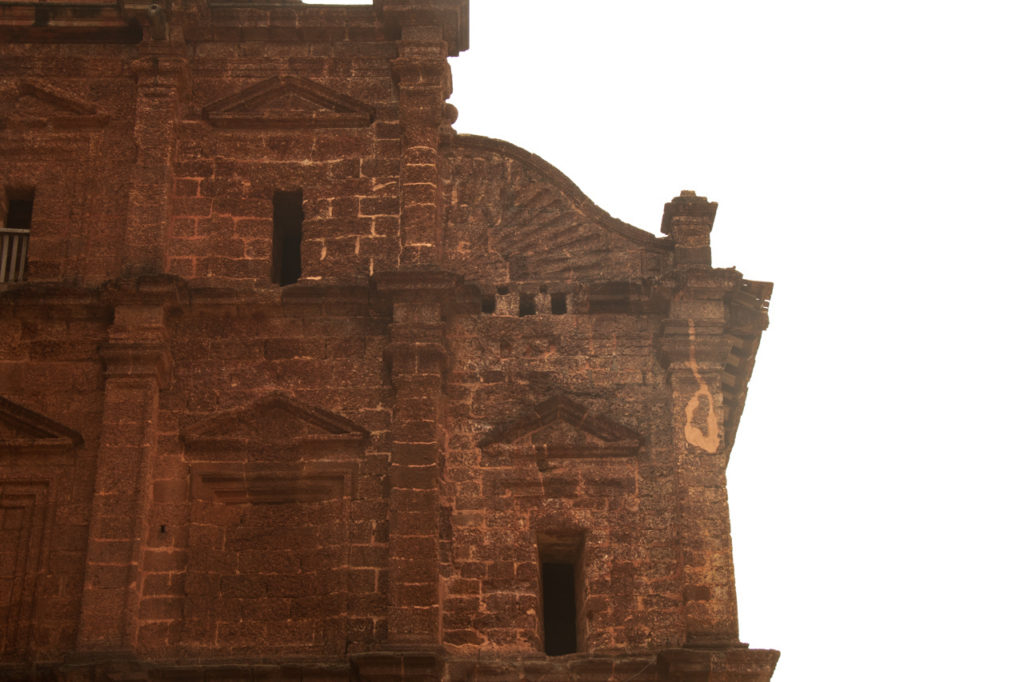
The fact that Goans cling onto the exposed laterite exterior of the Basilica as a symbol of Goan identity is a metaphor for how the very foundation of our society today is rooted in false conservation. As its exterior deteriorates, we seem to be focused on retaining this outward appearance at the cost of the health of the structure, the reverse of what conservation actually advocates.
A short distance away from the Basilica, another disastrous example of conservation has been carried out more recently. The ruin of the Church of the Discalced Carmelites, built in the 17th century is a heritage site of rich archaeological and architectural value. A well-meaning cleanup of the site by an unskilled contractor without expert oversight resulted in irreversible damage to the 400-year-old site. Basalt stones with rich inscriptions were unearthed and displaced from their original location. Walls that gave clues to the footprint of the site were cleared and changes made to the landscape in a manner that disregarded the architectural conservation process. In doing this, the authenticity of the site suffered, negatively impacting the scope for further research.
Alternatively, the interventions by the ASI (Goa Circle) at the Augustinian convent in the 1990s are an ideal example of how good practices can be followed in the handling of such sites. A dedicated team led by superintending archaeologist N. Taher carried out scientific clearance of debris in an attempt to make the complex more accessible to visitors. One can still see the classification marks on the stones that once formed part of the facade of the church that are neatly arranged over its forecourt. There are a few other examples of good practice, but all too often they are outweighed by the disastrous ‘restorations’ taking place.
The fact that Goans cling onto the exposed laterite exterior of the Basilica as a symbol of Goan identity is a metaphor for how the very foundation of our society today is rooted in false conservation. As its exterior deteriorates, we seem to be focused on retaining this outward appearance at the cost of the health of the structure, the reverse of what conservation actually advocates.
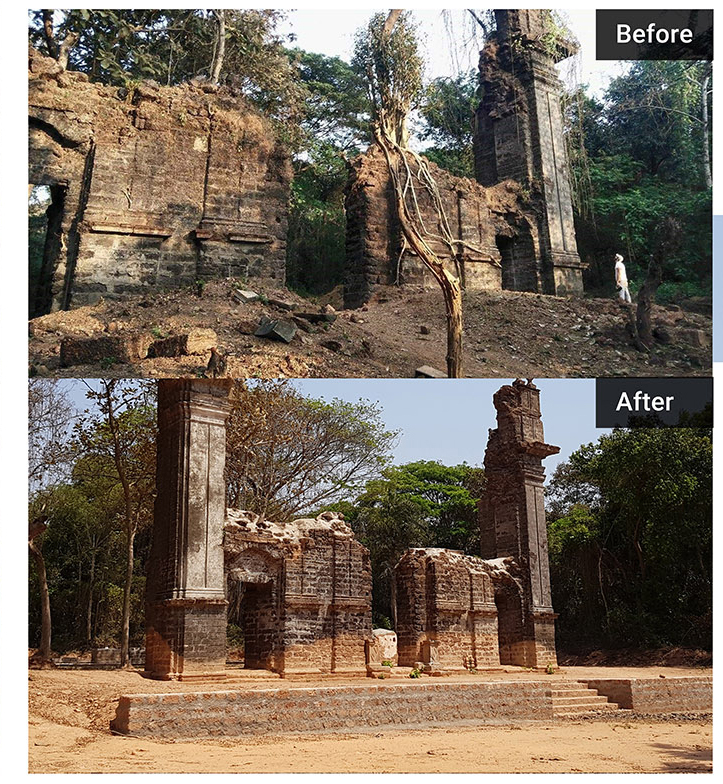

Further Reading : The Goan Temple : A unique architecture on its way out & Goa Temple renovation spate : Activitists alarmed as local features are replaced by pan Indian styles
The trend of senseless restorations is not restricted to religious monuments alone. Owners of prized heritage homes proudly announce the ‘repairs and renovation’ of their properties after obtaining clearances from local bodies, but go about razing the structure to the ground and rebuilding it in a kitschy manner – imitating what they think to be ‘Portuguese Architecture’. Beautiful Goan homes are rapidly being replaced in this manner with neoclassical fakes – cheaper versions of what existed before and devoid of any sense of context and visual harmony with the landscape.
The lack of a liberal arts curriculum in our schools has created a dangerous aesthetic illiteracy of our built heritage. Combine this ignorance with a toxic mix of readily available capital and we as a society seem to have lost the appreciation of the Goan-ness of our buildings.
Stakeholders like the Archdiocese of Goa and Daman, who are the guardians of several religious structures across the state, must immediately develop a detailed architectural inventory with the help of experts for all parishes. Using this they should be vigilant and decisively act against the trend of senseless reconstructions.
In the architectural realm, conservation is the process of consolidating a structure or site of importance and carrying out appropriate measures to prevent it from ruination. This is different from restoration, which involves returning a damaged structure to a previous or original form based on research. However, these process are relatively new to India, unlike in Europe where conservation has been practiced for centuries altogether. Hence, it requires acceptance by the public at large.
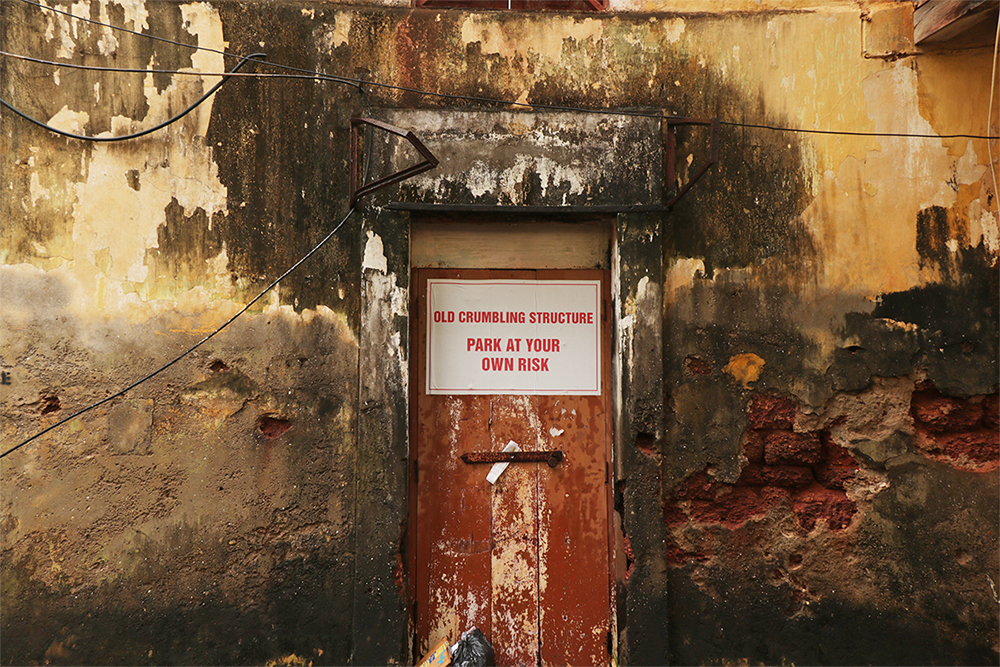
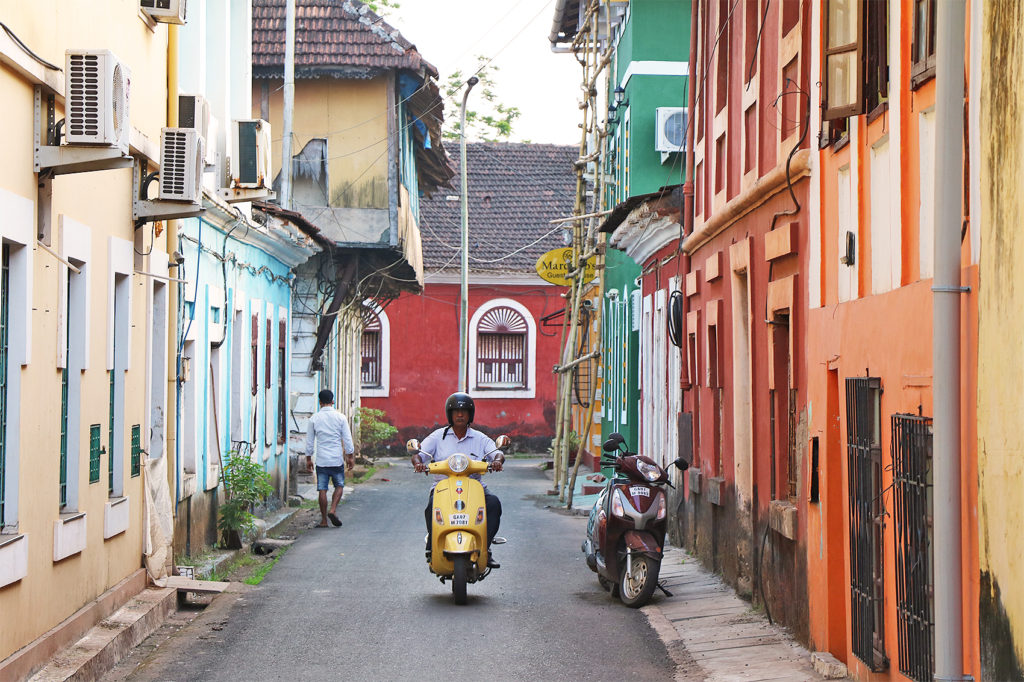
The Indian Institute of Architecture (Goa Chapter) needs to start a conversation with the public about the need to preserve our built heritage by working together with the right team of architects and restorers who follow established conservation practices while curbing interventions by untrained actors.
The built heritage of Goa is a unique architectural expression that arose from the confluence of several cultures over centuries and is an honest product of the eras they belong to. These buildings ultimately form the physical component of our identity as Goans. If these so called ‘restorations’ continue at this rate, we will soon be left with a completely alien landscape – a Goa we don’t relate to.
(This article first appeared on Herald dated 31st May 2020)
Special thanks to Ar. Fernando Velho and Jason Keith Fernandes for the reviews

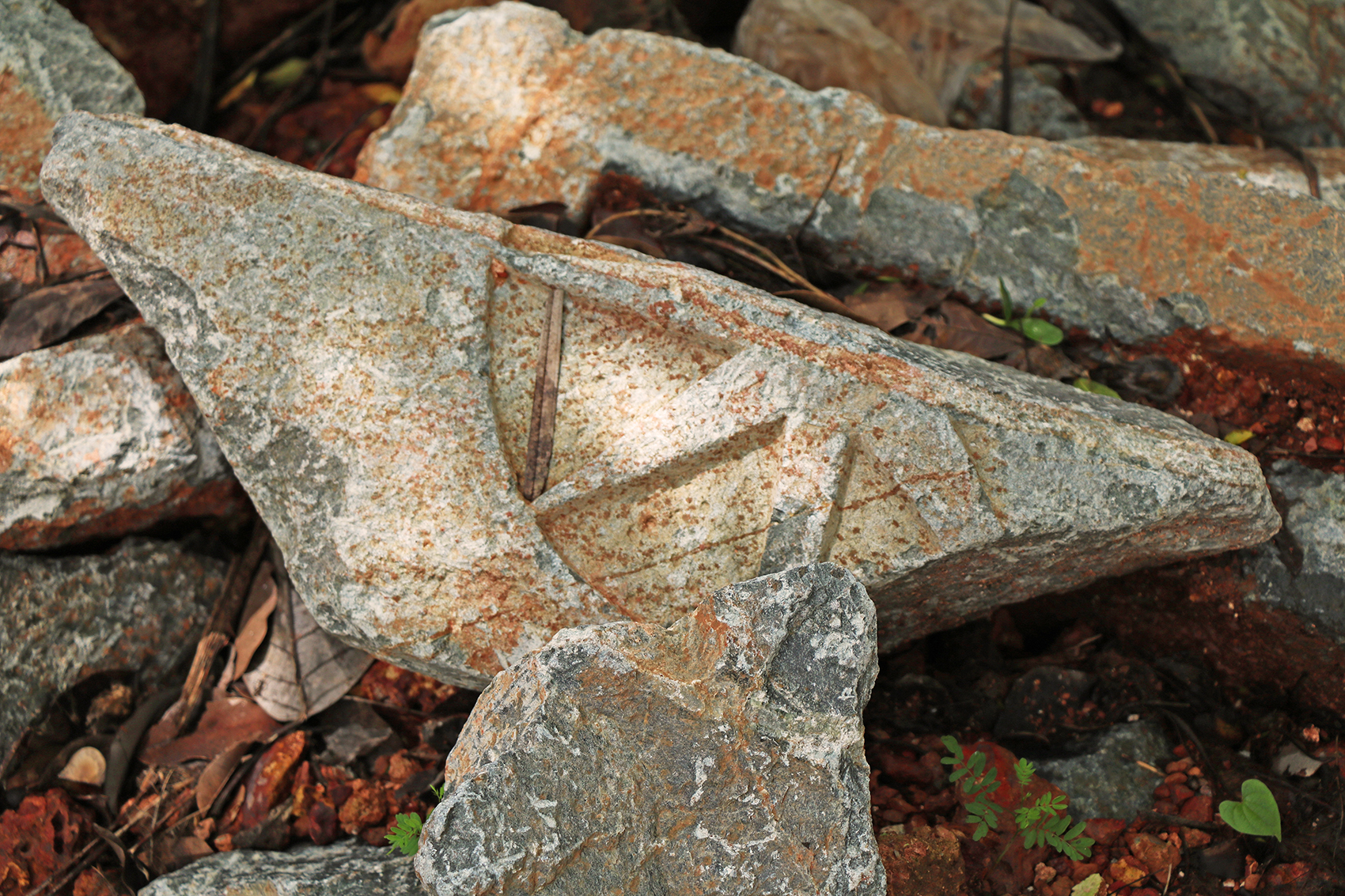


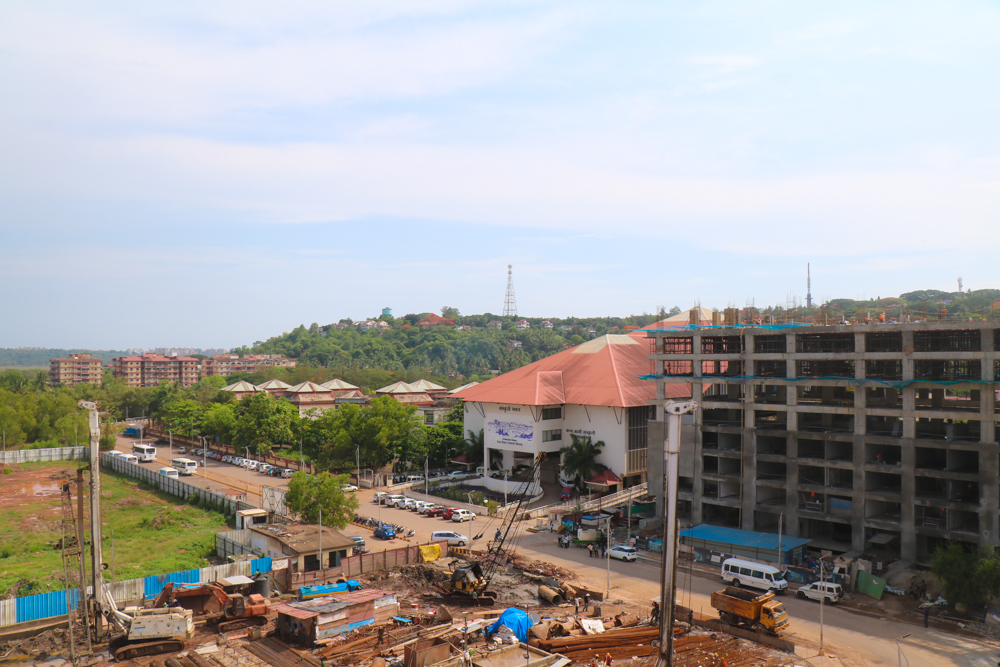

“The lack of a liberal arts curriculum in our schools has created a dangerous aesthetic illiteracy of our built heritage. Combine this ignorance with a toxic mix of readily available capital and we as a society seem to have lost the appreciation of the Goan-ness of our buildings. ”
This paragraph says it all. Our culture at-large is placing far too much importance on the technological advances of society which leaves behind an authentic understanding of our heritage in a jiffy. Sincerely hope that those engaged in cultural conservation can make their voices heard and be able to reverse the trend of bastardized restorations.
Great article!
That’s an amazing article. People really need to be educated about the importance of the built environment.
Thanks, I’m glad you agree, because there are quite a few people who do not realise the greater implications of the senseless ‘restoration’ carried out
Hehe thanks! 🙂
Another great read. Keep them coming!
i’ve been to & seen the (old) holy cross chapel at Calangute Tinto as a child & i agree with the authors view on the renovation being quite tasteless & gaudy today.